Paid Media, Owned Media or Earned Media?
Paid media, owned media or earned media: Which should you adopt?
In this post, as part of a content marketing blog series, we shall define media types that can be exploited in the process to carry content to its intended audience. The media types are commonly grouped into three categories: paid, owned and earned media.
It’s useful to see the three media categories as potential vehicles to take your messages to market, rather than media strategies. Balancing the three media forms is key to successful campaigns, to capture the attention of target audiences, with your content, at different stages of the buyer’s journey.
Subscribe for marketing insights via email
WHAT IS PAID MEDIA, OWNED MEDIA AND EARNED MEDIA?
Essentially, they are categories for the types of media available to marketing teams that have the ability to support different elements of the buyer’s journey/sales funnel. Perhaps, more importantly, is to know how each differs from another to be able to combine the different types of media during marketing campaigns.
Here are the three in more detail.
PAID MEDIA
Paid media refers to media that has been purchased via a third-party provider. Any form of advertising or paid promotion of your content or messages falls within this category where, in the science industries, an organisation generally pays a publisher or media website for impressions or leads.
This form of media often feeds other media efforts and is a way of getting eyes on content immediately which can usually be scaled and effectively measured.
Advertising
Paid search
OWNED MEDIA
Owned media refers to when an organisation utilises its own channels. Any media or content which the organisation has created, published on its own channels and controlled by itself for long-term relationships with stakeholders can be considered within this category.
Although this form of media is easy to control and is cost-efficient, it usually takes time for results to manifest.
Social media
Email lists.
EARNED MEDIA
Earned media is commonly the result of well-executed paid and owned media campaigns where recognition and extra coverage is the reward. The outcome is customers and the public, and in a B2B context normally the press, sharing content and discussing the organisation.
This results in achieving word of mouth marketing which is highly credible in any industry, but there can be limited control that also makes it hard to measure.
Press releases
Recommendations/reviews
Guest blogging.
MEDIA SELECTION
When it comes to media selection, it’s common to start with owned media, but you will usually see that owned media alone isn’t enough for a large-scale campaign. And as the owned media content is normally branded, the communications may not be trusted as much as content on a third-party website.
Therefore, paid media is always a valuable asset to have within any campaign. Paid media, of course, comes with a cost – but sometimes that cost, when compared to the cost of the time invested in creating certain content or building up an audience over time, is not as substantial as first thought.
Certainly, if you want impressions on a campaign message immediately, then the investment becomes worth it. Like any campaign, before choosing the preferred media, questions need to be asked:
What are the objectives of the content?
Where can the target audience be accessed?
Can the content benefit influencers or the wider media?
Are competitors doing similar?
COMBINING MEDIA TYPES
The commonality for each media type, however, is that content will always be at the centre – there is little point in combining media types without content itself.
The ideal marketing or campaign will incorporate all three of the media types for maximum coverage and maximum results. Where all three cannot be achieved, be sure to use at least two – this is certainly the case for a lead generation campaign.
Altimeter diagram demonstrating the relationship between media types and their roles within a wider campaign.
HOW DIFFERENT MEDIA TYPES CAN COMBINE (SCENARIOS)
1. After creating content for your website or blog, or even a video on YouTube, and then sharing it on your social channels (owned media), consider sponsoring or boosting your post (paid media). Paid media will also form the main distribution channels for whitepapers and e-books in the science industries in the form of sponsored content and e-blasts.
2. Other content forms, such as news articles and blog posts (owned media), can be picked up by influencers (earned media) or even promoted by influencers for a fee (paid media). When creating content, do a little research before publishing to gauge whether the content could have a viral element to it that would be suitable for sharing via industry influencers.
3. If your organisation has been highlighted within a media publication or third-party website (earned media) or has received a positive review, create blog or social media content (owned media) to distribute the narrative further.
RECOMMENDATIONS
Whilst the media types are separate in their own right, very rarely do they operate in isolation within marketing campaigns. Here are some recommendations for science marketers to ensure that the three media types can be exploited to their highest potential.
DEVELOP A LONG-TERM CONTENT PLAN
Rather than target a media type, begin with a long-term content plan that forms the basis of your entire content marketing plan. This should derive from your marketing objectives and the strategic elements to achieve this plan, which will include the growth strategy as well as the target audience. Then look at the media types...
BEGIN WITH OWNED MEDIA AND EXPAND OUTWARDS
In most cases, owned media will be your first port of call where you can gauge how a specific piece of content or content type has been received to be able to make a judgement call on how to expand reach by adopting a second media type.
BRING YOUR INTERNAL TEAMS TOGETHER
Large marketing teams will have their own departments, such as content, social, PR, brand, paid media, events etc. and may not always communicate effectively on projects and campaigns. It’s also possible that teams external to the marketing department have a contact within the industry who can broadcast a message to a much wider audience.
LIMIT THE NUMBER OF PAID MEDIA PLATFORMS - BUT INVEST MORE WITH FEWER
Paid platforms will have the ability to reach targeted audiences crucial to your marketing campaign. But many other organisations like yours will advertise with third-party publications, meaning that your message can easily get buried in the noise. Therefore, it's crucial that each paid campaign is maximised. When advertising with a publisher, be sure to negotiate a deal that gives you exposure via a number of their channels, such as print, website, email, banners, social media etc. The more your message appears within a publication's properties, the more likely it will stick.
MAKE OWNED CONTENT UNBIASED
Owned content can sometimes get picked up by third-party websites and influencers naturally without having to do any outreach. Ensure that owned content is unbiased to improve your chances of this happening. So if a third party discovers the content it can be easily shared without effort on their part.
GET CLOSE WITH YOUR AGENCY
Your agency will have lots to give you, just like you will have lots to give your agency. When looking to embark on a mix media campaign, be sure to strategise with your agency on all elements of the campaign. Messages, audiences and distribution – among other factors – can become stronger when there are more people at the table contributing.
CONSIDER USING PAID MEDIA TO GET MORE OUT OF OLD CONTENT
Content requires time and resource. At times, such content may not have generated as much impressions and pageviews as first hoped. This doesn't mean that the content itself is of poor quality, just that the amount of coverage and traffic the owned media (at that certain time) generated might have been lower than expected. Look to old content and see whether you can give it a new lease of life via different media channels.
EACH PIECE OF OWNED MEDIA REQUIRES PAID OR EARNED (OR BOTH) TO HELP IT ALONG
Another reminder that all marketing and content campaigns do not operation within silos - this can affect a number of stakeholders on other websites in a number of ways. Help your content get more exposure by leveraging the channels and media types available.
USE A MEDIA TYPE TO AMPLIFY ANOTHER
This post on media types is important in the context of an overall content marketing plan as it represents the different channel by type available to science marketers. The distribution type categories, including the strengths and weaknesses in each specific to your organisation, can also determine the type of content that can be created.
It's also worth monitoring and measuring current paid, owned and earned media efforts to identify which media category is generating traffic and engagement, and which are not, to be able to influence them in future. Moreover, look at how a media types can combine to amplify another - Google Analytics data (look at referral traffic) and Google Alerts (monitoring branded terms) can provide the clues needed to make a success of your mixed media campaigns.




